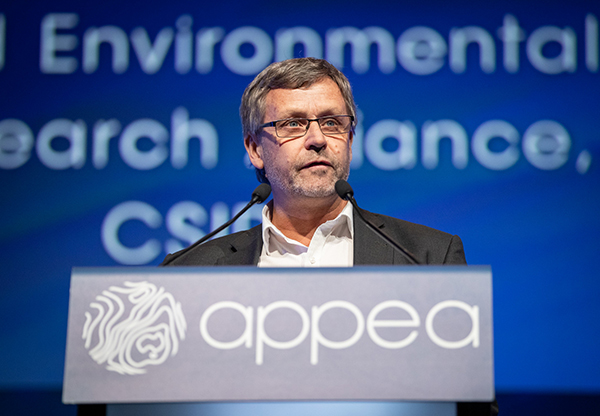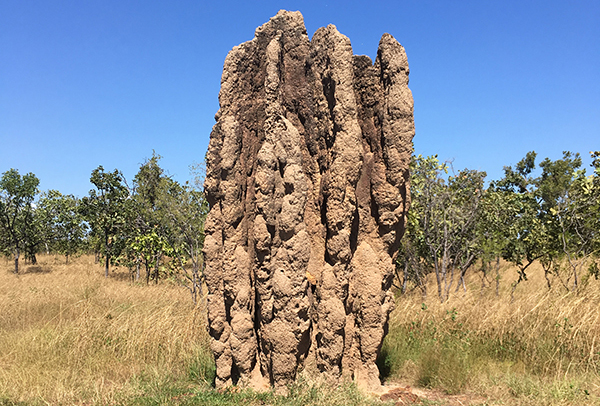GISERA Newsletter, August 2019


Earlier this year, I spoke at the Australia Petroleum Producers and Explorers Association (APPEA) annual conference about the community well-being research recently conducted in Queensland by GISERA. It was an opportunity to not only provide valuable insights about the way Queensland communities have responded to onshore gas development, but also to reflect on how, over time, GISERA has been on a journey with the people who work in and around unconventional gas.
This work relates to our third and latest community well-being survey, conducted by CSIRO scientists in the Surat Basin - the first survey took place in 2014 and the second in 2016. In 2018, we extended the surveys from the Western Downs regions to include Maranoa to give us perspectives on the views of a community that has been familiar with onshore gas for over 20 years.
A key finding shared at APPEA was that the longer the period of time a community co-exists with onshore gas activities, the more relaxed and comfortable community members become. Conversely, when communities are unfamiliar with industry, and where there is uncertainty, there can be high levels of concern.
Our research shows that managing these concerns and building community confidence in co-existence with industry can be achieved but it is a task that can take years, even decades. Visitors to our new GISERA community survey data portal can see the changes in community attitudes that occur over time, as well as compare survey results by gender, age, community and location. It's well worth a look.
In other GISERA news, we have been active in the Northern Territory and South Australia, as well as exploring new research opportunities in New South Wales and working to complete research activities in Queensland. This includes final reporting on life-cycle analysis of gas emissions in the Surat Basin.
We received recent approval for new research projects in the NT. These projects will examine the fate of shale-gas related chemicals in relevant aquifers and soils, and investigate stygofauna and groundwater dependent ecosystems. This will complement work recently completed in the region - baseline research into ambient methane levels, and geochemical analysis of groundwater samples.
In March we welcomed Pangaea Resources as a GISERA partner. Along with Origin and Santos, Pangaea Resources are seeking to explore for shale gas in the Beetaloo sub-Basin, south of Katherine in the NT.
Regards
Dr Damian Barrett
GISERA Director

Australian exploration and production company Pangaea Resources joined GISERA in March this year.
Pangaea's diverse portfolio of oil and natural gas operations across onshore Australia include Northern Territory exploration permits in the western McArthur and central Beetaloo basins, south east of Darwin.
Their decision to join GISERA is a reflection on CSIRO's key role in independent scientific studies and research programs that are informing the community, industry and the NT Government about potential shale gas development in the Beetaloo Basin.
Pangaea joins existing GISERA industry partners Origin and Santos, which also have an interest in Beetaloo Basin shale gas exploration activities.

CSIRO researchers conducting baseline methane measurements for GISERA have experienced the Northern Territory in all its seasonal glory - from the oppressive heat of the dry season, and the scorching fire season, to the wet season's flooding rains.
The recently completed methane baseline research project involved three vehicle-based surveys conducted during the dry season (July/August 2018), the fire season (November 2018) and the wet (January/February 2019).
Over a period of 29 days, almost 15 000 km of trafficable roads and tracks were surveyed. Measurements were replicated across the entire survey area, depending upon accessibility, including areas near abandoned petroleum wells and water bores.
The average atmospheric methane concentration across the survey area ranged from 1.80 to 1.82 ppm. This is close to the normal background concentrations of approximately 1.8 ppm expected in rural or natural areas.
Each survey identified isolated pockets of slightly elevated methane concentrations in some areas; the sources of these were identified as predominantly grazing cattle and other less dominant sources from townships, fires, termites, wetlands and a small section of above-ground pipeline.
Slightly elevated methane levels were found in measurements around the above-ground infrastructure along the section of the Daly Waters to McArthur River Gas Pipeline, adjacent to the Carpentaria Highway.
These baseline methane surveys form part of a suite of GISERA studies being undertaken in the NT, in line with the recommendations of the March 2018 final report of the Scientific Inquiry into Hydraulic Fracturing in the Northern Territory.

CSIRO Energy featured prominently at the annual conference of the Australian Petroleum Production and Exploration Association (APPEA) in May. GISERA shared the high-tech CSIRO Energy exhibition booth, and GISERA Director Damian Barrett delivered a presentation on Onshore Gas Coexistence in Queensland.
APPEA is the peak body representing Australia's oil and gas exploration and production industry and the conference was held at the Brisbane Convention Centre from 27-30 May. The turnout was the highest in six years, with nearly 3 000 delegates attending. Key themes emphasised greenhouse gas emissions and the role of natural gas as a transition fuel to renewables, safety and well-being, and carbon capture, utilisation and storage.
CSIRO Energy's presence and participation showcased a new virtual reality interactive experience, the evolving research into tiltmeter equipment from the CSIRO's hydraulic fracturing team, working robotics and a trial of CSIRO and GISERA videos converted into augmented reality on HoloLens.

A diverse range of local people and businesses from the south-east region of South Australia joined forces in March to discuss the role of natural gas in the local economy, as part of a GISERA social science project.
CSIRO scientists Tom Measham, Lavinia Poruschi and Ray Martinez are leading the research project Assessing the value of locally produced conventional gas in South Eastern South Australia. The project has developed a profile of the local gas industry and its role within the regional economy, and has developed scenarios for how the local gas industry may evolve.
Tom said a key part of the project was to engage people from different businesses and industries across the south east of SA in a workshop environment. The aim was to share ideas and perspectives on what the local economy might look like under future gas development scenarios.
"From a research perspective, we received highly valuable stakeholder input into the development of the scenarios and an expression of preferences for each scenario", Tom said.
"Workshop participants appreciated the opportunity to discuss the role of energy in the regional economy and to communicate ideas across different sectors that don't normally sit down together".
The study aims to develop knowledge for policy makers and local businesses regarding the socio-economic value of gas activity for local communities and an improved capacity to forecast outcomes from industry development.
Find out more about the project via our factsheet.

The final report for a CSG-LNG Whole-of-life Greenhouse Gas Emissions Assessment project has been completed and is now available on our website. The report, which assesses emissions associated with the Queensland coal seam gas to liquefied natural gas industry, uses commercial-in-confidence data from a project in the Surat Basin.
The researchers have found that greenhouse gas emissions associated with CSG production, compression, dehydration, water treatment and liquefaction are at the lower end of the scale. In addition, the primary activities contributing to emissions were electricity use on-site for CSG extraction, and combustion of natural gas for electricity for LNG production.
Outside of Australia, combustion of natural gas represented more than 80 per cent of total emissions, including all processes from well head through liquefaction, shipping, regasification and combustion.
This research has enabled greater understanding of the emissions generated by the extraction and production of LNG. Whole-of-life studies such as this can help us determine any climate benefits through the replacement of thermal coal with LNG, and address the concerns of communities, government and industry in relation to natural gas emissions.
Read the report [pdf 660 kb] and watch our CSIRO/GISERA animation for more detail.

In the last issue we reported on the Trends in Community Wellbeing project, which looked at changes and trends in wellbeing, resilience and local attitudes to CSG development within communities in central and south-west Queensland. Data from this project can now be accessed through a new survey data portal developed by GISERA.
The data portal allows users to explore survey data from CSIRO’s report: Trends in community wellbeing and local attitudes to CSG development, 2014 – 2016 – 2018: Western Downs and eastern Maranoa regions, Queensland [pdf · 3mb].
You can explore changes between years (2014, 2016 and 2018) in the Western Downs region of Queensland, as well as make comparisons with the neighbouring eastern Maranoa region (in 2016 and 2018). Results can be further explored by sub-region, age, gender and location (i.e. in or out of town).
The project involved monitoring and communicating the changes and trends in community sentiments related to CSG development across different phases of industry operation – construction, post-construction and operational phases of development.
Research like this, into social and economic impacts arising from CSG development, can help us understand and gain knowledge about what enables communities to benefit from future resource developments, in this and other regions across Australia.
To start exploring, go directly to the GISERA community wellbeing survey data portal.

We have some exciting new projects beginning in New South Wales and the Northern Territory.
What's new in NSW
What's new in the NT
Don't have time to read a detailed report? GISERA provides a fast track to the latest news and research project progress with clear, concise and easy-to-read fact sheets.
Here's the latest from the GISERA web site:
